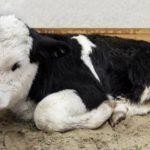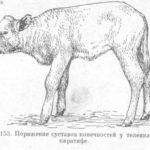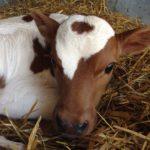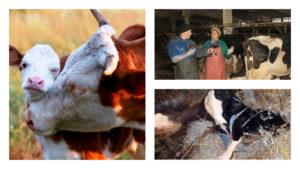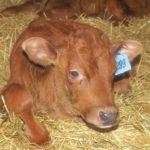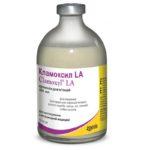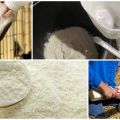Causes and symptoms of paratyphoid fever in calves, treatment and prevention
In young cattle, immunity is still weak, their body is susceptible to attacks by pathogenic microorganisms. The causative agents of paratyphoid fever in calves are bacteria of the genus Salmonella. They are resistant to most antibiotics, emit a lot of toxins during their vital activity, and negatively affect the immunity of a sick animal. The disease is accompanied by profuse diarrhea, if left untreated, the calf dies.
Description of the disease
Paratyphoid is an infectious pathology of bacterial origin. Pathogenic bacteria infect the intestines of young individuals, causing an acute inflammatory process. The causative agent of paratyphoid fever is Salmonella Gertner, which causes acute food intoxication not only in animals, but also in humans. Toxic substances released by bacteria accumulate in the soft tissues of the calves, so the meat of infected animals must be disposed of.
A person who has consumed veal contaminated with salmonella develops severe poisoning. Salmonella is a rod-shaped microorganism with rounded edges. In the external environment, it is active, resistant to negative factors, does not respond to high temperatures and most antibiotic substances. But it is susceptible to antiseptics, which include lysol (cresol soap) and creolin.
Causes of occurrence
The occurrence of paratyphoid fever is facilitated by non-compliance with the conditions for keeping livestock.
The main causes of paratyphoid infection in calves are:
- crowded content in a cramped barn;
- insufficient lighting;
- unsanitary conditions;
- poor quality feeding, the use of spoiled products.
The disease is aggravated by the low temperature in the stable, due to which the immune system of the calves is weakened. But normalization of temperature conditions does not help if the animals are already infected, since salmonella are immune to temperature extremes.
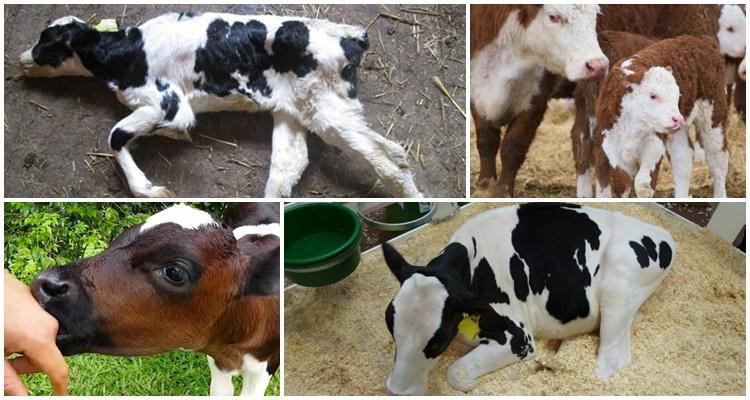
Bacteria enter the body through the respiratory tract. And in the external environment, Salmonella end up with the feces and urine of diseased individuals. The infection can enter directly into the digestive tract of the calf by eating contaminated feed or drinking water.
Forms and symptoms of paratyphoid fever in calves
The incubation period of paratyphoid lasts from 5 days to 2 weeks. The infection affects the nervous system, the digestive tract, and later, in the absence of proper treatment, the joints.
Paratyphoid fever in calves occurs in three forms.
Acute form
It is noted in calves less than a month old.
The main symptoms of the acute form:
- fever, in which the body temperature rises to 40-41 ° C;
- fetid diarrhea with mucous inclusions, sometimes streaked with blood;
- weakness, impotence, inability of the calf to get up from the bed;
- conjunctivitis, accompanied by profuse lacrimation;
- rhinitis, discharge from the nasal passages of the calf of a mucous mass with serous impurities;
- cough.
Conjunctivitis and runny nose appear several days after diarrhea. Rhinitis is not observed in all cases, and the calf usually begins to cough when the owner opens the barn door and lets cool air inside. With a running paratyphoid, the limbs swell, convulsions are observed, consciousness is inhibited. But until the very death, the pet eats well.
If, in the acute form of paratyphoid fever, the body temperature often fluctuates, then the probability of the survival of the calf is high. If the pet suffers from profuse diarrhea, the fever does not go away, lethargy and weakness increase, then there is no doubt of imminent death.
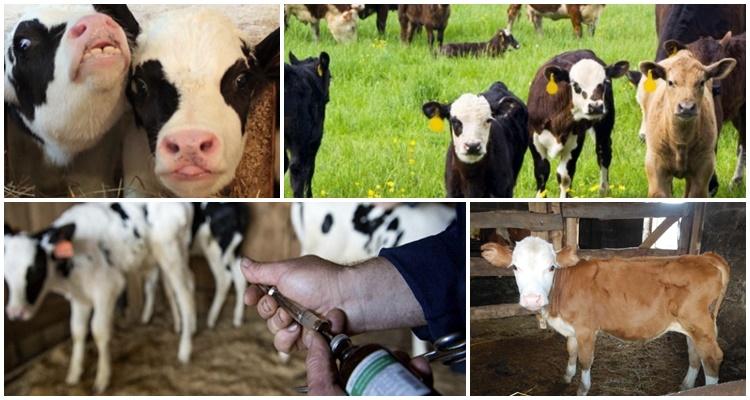
Subacute form
It is detected in calves that have reached one month of age. Lasts 3-5 days.
Symptoms of the subacute course of paratyphoid fever:
- poor appetite;
- short-term fever, in which the temperature rises to 40-41 ° C;
- poor diarrhea;
- rhinitis with clear discharge from the nasal passages;
- slight cough, wheezing breathing.
Cough and wheezing are not always noted. If there are no aggravating pathologies, the pet recovers.
Chronic
Acute paratyphoid becomes chronic. The intestinal inflammation gradually goes away, the diarrhea stops, but the infection migrates to the lung tissue. The sick calf breathes heavily and frequently, sometimes with wheezing and whistling. When listening with inhalation and exhalation, wheezing is heard, with percussion (tapping), dullness of sounds is noted.
The duration of chronic paratyphoid fever is up to 2 months. The likelihood of death in the absence of proper treatment is high, since the pet's body is in an emaciated state.
Diagnostics
To identify pathogenic microorganisms, an agglutination reaction is carried out in the laboratory - the precipitation of glued bacteria under the influence of antibodies in an electrolyte environment. The results of the analysis are often overestimated not only in sick animals, but also in healthy animals nearby. An accurate diagnosis is made by the veterinarian after the autopsy of the dead calf. What an autopsy shows with different forms of paratyphoid is indicated in the table.
| Disease form | Affected bodies | Changes |
| sharp | mucous membranes | hemorrhage |
| liver and spleen | swollen, hemorrhagic | |
| lungs | deep red, filled with blood, hardened in some places | |
| subacute | heart muscle | in most cases reborn |
| stomach and intestines | inflamed | |
| liver and spleen | battered with gray spots | |
| lungs | red, with thickening of tissues and blood clots in different places, the bronchial tree is inflamed, inside it mucous and purulent accumulations, the lymph nodes near the lungs are swollen and reddened | |
| chronic | intestines, liver, spleen | changed in the same way as in the acute form of the disease |
| lungs | abundantly strewn with necrotic spots, the bronchi are clogged with a purulent mass, the mucous membrane is inflamed, with many hemorrhages |
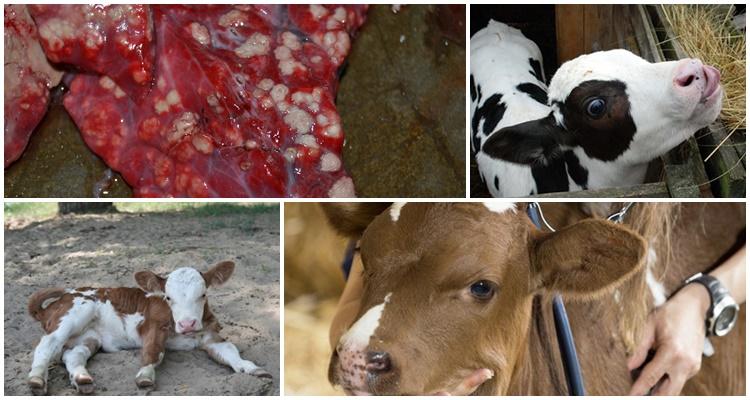
Treatment methods
The owner must immediately isolate sick individuals and disinfect the barn. The most reliable drug for paratyphoid fever is Bacteriophage. It is sold in 20 ml vials, 4 pieces in a box. The calf is given orally 3 times a day, 2.5 vials for mild paratyphoid fever, 5 vials for severe.
Of the effective drugs, one can note the Klamoxil suspension and the Terramycin injection solution.The first drug is injected into the muscle, the dose is 1 ml per 10 kg of body weight. In severe cases of paratyphoid fever, a second injection is given after 2 days. The second drug is much stronger in action; it is injected once into the muscle at the same dosage.
You can also treat the calf with oral preparations "Sulgin", "Levomycetin", "Furazolidone". They are added to compound feed 3 times a day, the dose is 3-8 mg per 1 kg of body weight. The drugs can be alternated. The treated pet is given nicotinamide (vitamin B3), the daily dose is 100 mg per 1 kg of feed. The paratyphoid calf is kept in quarantine for 3 months.
Possible consequences
A sick pet has swelling of the brain tissue, hemorrhages occur in the organs of the reproductive and urinary systems. In some cases, pathological changes in the liver and spleen are possible. The main blow of the infection falls on the intestines, inflammation begins, the functional state of the mucous tissues lining the intestinal tube is disrupted. In advanced cases, the calf has cramps in the limbs - this is a sign of damage to the articular tissues.
In the acute form, calves in many cases die within 1-2 days after the onset of symptoms due to blood poisoning. With competent and timely treatment, the mortality of young individuals can be reduced to 3%, or even all pets can be saved.
Vaccination and preventive measures
The main preventive measure is maintaining cleanliness. The barn should be cleaned and disinfected regularly, the litter should be changed, and the feeders and bowls from which the calves eat. It is recommended to use a lime solution as a disinfectant. The room must be dry, ventilated and spacious. It is important to keep the livestock equipment clean and to feed the animals with quality.
The second preventive measure is livestock vaccination. Cows can be carriers of paratyphoid fever, they infect newborn calves, and in those the immune system is not yet strong, the body is weak, cannot fight the infection. Therefore, a calf born to an unvaccinated cow is immediately isolated. Cattle are vaccinated against paratyphoid fever with a concentrated formol-alum vaccine. The dosage and frequency of vaccinations is determined by the veterinarian. You cannot treat and vaccinate animals at your own discretion, all actions must be coordinated with a veterinarian.
